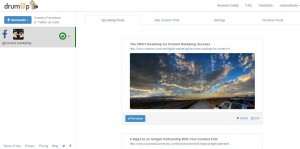User Intent Impacts Revenue From Advertising More Than Most Marketers Think
by Laurie Sullivan , Staff Writer @lauriesullivan, September 25, 2017
Visitor behavior on a brand’s website impacts revenue, and a series of studies has found that user intent may have a much greater impact on ad revenue than traditional user experience metrics.
Through the research, Ezoic identifies a phenomenon it calls Fake UX, in which page views and other metrics are artificially inflated and bounce rates are reduced or improved during a session. It’s essentially the artificial inflation of these common user experience metrics, which has a negative impact on revenue.
The findings show that while bounce rates, session duration and page views have a direct correlation to revenue, the numbers can be manipulated or misleading.
Data highlighted in several new case studies reveals the shift. For example, a website for a niche sporting goods store dedicated to a group of specific fans wanted to overall website speed, user experience, and ad revenue.
The brand choose to evaluate its progress by analyzing navigational bounces, engagement time, and engaged page views per visit, along with ad revenue per session, thus demonstrating a trend between these engagement analytics and digital ad revenue.
The publisher saw a 28% decrease in navigation bounces on their website, which are an internal page bounce, after implementing automated multivariate testing.
The bounce rates show that a user may have accidentally navigated to the wrong page, found the content on the page they navigated to was irrelevant, or had been turned away by long load times or annoying ads, according to the findings.
Navigation bounces are bad for ad rates and result in lower advertiser performance metrics such as viewability, according to the study.
It really comes down to website testing. And it’s not about total revenue improvements, but earning more from every session through better experiences for visitors.
MediaPost.com: Search Marketing Daily
(71)
Report Post




